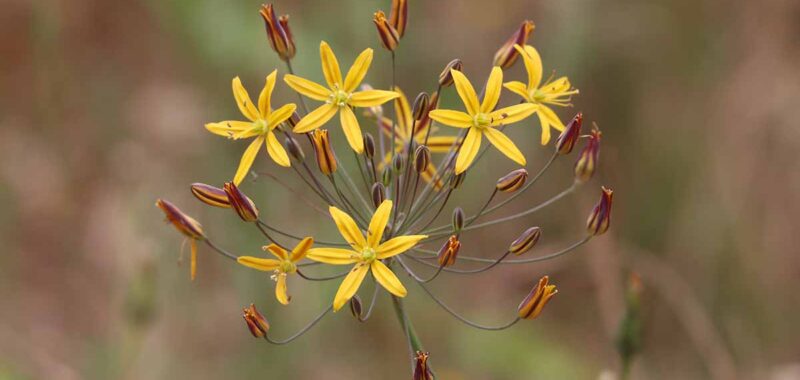Bloomeria spp.
In the past, species in the Bloomeria genus were only known to native plant specialists and experts in the region where they grow indigenously.
With gardeners discovering a new passion for native plants, some of the species that have previously sat humbly in the background are now enjoying some time in the spotlight.


The first time I encountered bloomeria, I was out hiking in southern California with a native flowering plant book in my hand.
I’d picked the book, which was written and illustrated by a local author, in the hopes of gaining some insight into the plants I was seeing as I explored the chaparral, woodlands, and coastal hillsides.
In Southern California, bloomeria is a popular option at plant nurseries that specialize in native species.
Here’s hoping that more gardeners who are looking for an easygoing, reliable bloomer that will draw all the pollinators will try growing beautiful bloomeria.
If you’re thinking about adding it to your garden this guide will help you succeed. Here’s what we’re going to chat about:
Bloomeria is a genus of plants endemic to dry areas of Southern California and the Baja peninsula.
Commonly known as goldenstar or golden stars, there are three species in the genus.
B. crocea is the most common, and is considered the type for the genus. There are three recognized varieties: var. aurea, var. crocea, and var. montana.


You really can only tell them apart by the size of the nectar cup and the size or shape of the filaments, so the difference doesn’t really matter unless you’re a botanist.
San Diego goldenstar (B. clevelandii) is rare and you’ll only spot it in the wild around San Diego. The flowers are more delicate and have separate filaments and anthers, whereas they are fused on the other two species.
Dwarf goldenstar (B. humilis) is a dwarf species that only reaches about a foot tall, with the flower scape about four inches tall at most.
All three species grow in coastal areas, sandy soils, dry woodlands, hilly spots, or grasslands.
Quick Look
Common name(s): Common goldenstar, golden stars, bloomeria
Plant type: Perennial flowering corm
Hardiness (USDA Zone): 6b-11a
Native to: Baja Mexico, California
Bloom time / season: Spring
Exposure: Full sun to partial shade
Soil type: Sandy loam, well draining
Soil pH: 6.0-8.0, slightly acidic to alkaline
Time to maturity: 4 years
Mature size: 2 ft wide x 2 ft high
Best uses: Mass planting, wildflower garden
Taxonomy
Order: Asparagales
Family: Asparagaceae
Genus: Bloomeria
Species: Aurea, crocea, montana
Bloomeria produces grass-like leaves that grow to about two feet tall from an underground corm. This corm acts as an underground storage system for the plant.
New leaves and flowers emerge from the corm each year, which allows the plant to survive even when an area is devastated by fire. That’s why you’ll often see them taking over regions impacted by fire.

